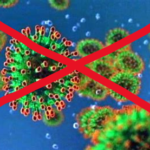
Three out of five of the 1,645 Virginians who have died from COVID-19 have been residents of long-term care facilities — one of the highest percentages of any state in the United States. There has been considerable speculation why. Vincent Mor, a research scientist with the Brown School of Public Health, has found that nursing-home staffing levels aren’t the issue. Neither is the source of funding, whether Medicaid or private insurance.
Mor argues that the size and location of long-term care facilities are the most decisive factors. Facilities most likely to have COVID-19 cases tend to be (1) located in larger urban areas with large populations of Hispanics and African-Americans, who are disproportionately likely to have the virus, and (2) the size of the facility, or, more specifically, the greater the number of employees coming and going.
“It’s all about the traffic,” he says in this PowerPoint presentation summarizing his research. “The bigger the building, the more people enter. … So, it’s NOT about the facility but the virus.”
I had never made these connections, and I think they are worth exploring here in Virginia. If the same pattern holds, it may influence how public health authorities prioritize the allocation of resources in the battle against the virus.
Mor advocates more testing, more support for staff, and more personal protective equipment. Speaking of PPE, it’s worth noting that the Virginia Hospital and Healthcare Association nursing home dashboard indicates that access to PPE, once a significant problem for many Virginia nursing homes, is far less of an issue. Only two facilities reported difficulty obtaining N95 masks, and hardly anyone reporting problems getting other types of PPE.
— JAB

Leave a Reply
You must be logged in to post a comment.